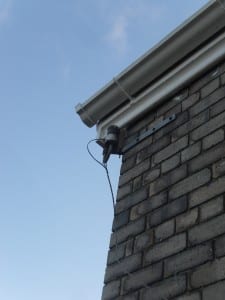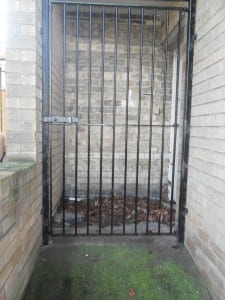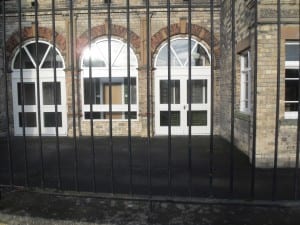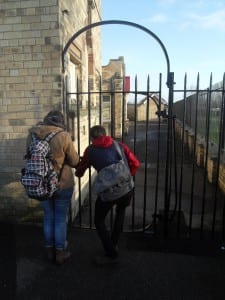The Lincoln grandstand hosted the Lincolnshire handicap race for 111 years before its move to Doncaster. For over a century this ground was one of the busiest places in the county.
On the latest exploration however, we found this…
The remnants of an old Tannoy system. The very voice of the stand, now robbed. Years of commentary and race announcements silenced, with not even an echo in the air that could hint towards the atmosphere of the past. Imagine walking up to the stand on race days, the smell of horses and hot food, the sight of a crowd squeezing themselves onto the stand, but picture that without the sound from the loudspeaker directing people of the day’s entertainment.
The voice could still be existent somewhere in the venue, but it would be behind a parameter of iron.
Metal gates and bars surround the grandstand now, giving out a sense of entrapment and imprisonment. The initial response to this is how the atmosphere of what the stand was before, is now changed to one of an eerie, dark and dangerous place. The lives, the voices of the past and the stand itself is now guarded under lock and key. A place that once brought excitement, now an emptying space.
How can the sounds of the past be recreated and where would anyone begin? The grandstand itself was a means to (unintentionally) infuse two separate comings together; the races and the RAF base. Mike Pearson states that the answers start from the site itself through exploring ‘ two basic orders: that which is of the site, its fixtures and fittings, and that which is brought to the site, the performance and its scenography’ (2010, p.35). The images above show what is of the site, but that which was brought to the site will be the challenge to locate. The Lincolnshire handicap, the biannual three day race, moved to Doncaster in 1965. The RAF activity during the war ceased and now operates in surrounding bases. Although there is nothing being brought to the site that relates to its past today, these events ‘are inseparable from their sites, the only contexts within which they are intelligible’ (Pearson, 2010, p. 35).


